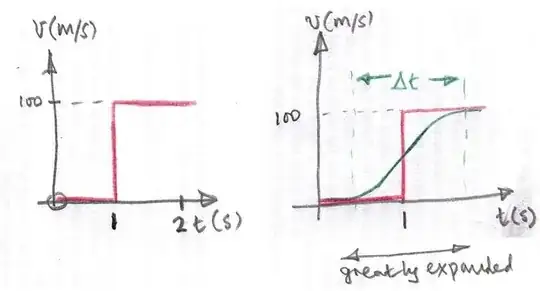What I mean is, suppose a ball is fired from a cannon. Suppose the ball is moving at 100 m/s in the first second. Would the ball have started from 1m/s to 2m/s and gradually arrived at 100m/s? And is the change so fast that we are not able to conceive it? Or does the ball actually start its motion at 100m/s as soon as the cannon is fired?
Suppose a 40-wheeler is moving at the speed of 100 kmph. And it collides with a car and does not brake (The car is empty in my hypothesis ;-) ). If a body does not reach a certain speed immediately and only increases speed gradually, does that mean that as soon as the truck collides with the car, the truck momentarily comes to rest? Why I ask this is because the car is not allowed to immediately start at the truck's speed. So when both of them collide, the car must start from 0 to 1kmph to 2kmph and finally reach the truck's speed. Does this not mean that the truck must 'restart' as well? Intuition tells me I'm wrong but I do not know how to explain it physically being an amateur.
When is it possible for a body to accelerate immediately? Don't photons travel at the speed of light from the second they exist?
